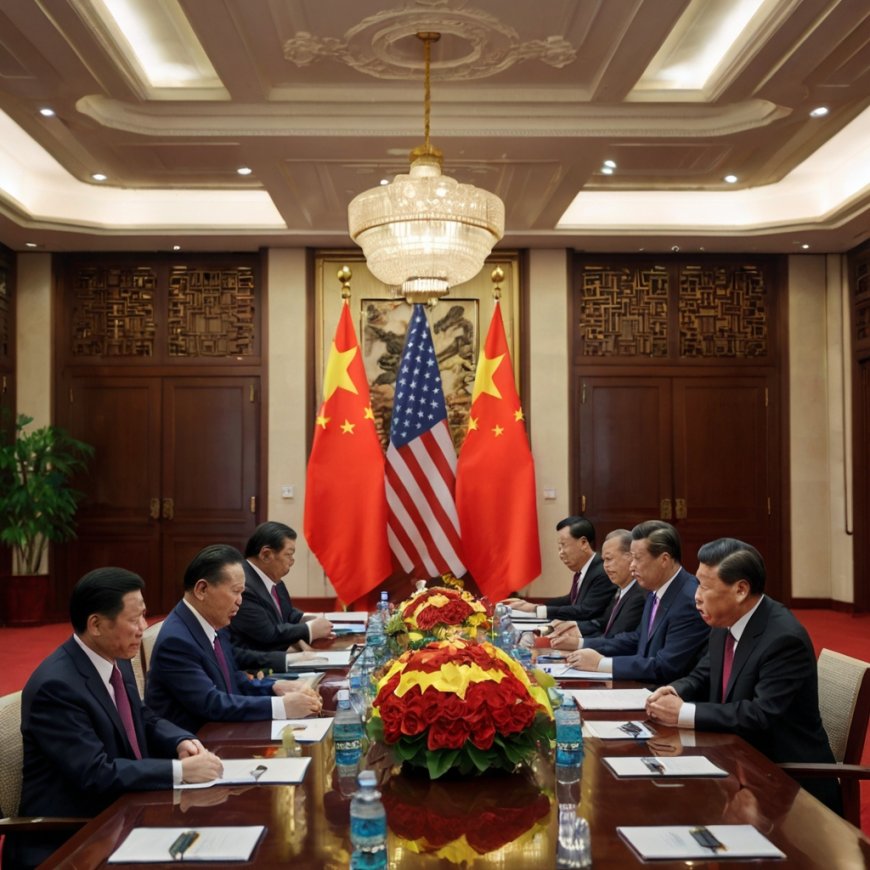How U.S. Tariffs Are Strengthening China in Southeast Asia
Explore how U.S. tariffs under President Trump are strengthening China's ties with Southeast Asian countries, reshaping global trade alliances.

As the trade war between the United States and China intensifies under President Donald Trump’s leadership, Beijing is swiftly turning to its Southeast Asian neighbors to bolster economic ties. This strategic pivot not only redefines China's role in the region but also underscores how U.S. tariffs are inadvertently empowering its greatest competitor on the global stage.
China’s Diplomatic Offensive in Southeast Asia
On April 20, Chinese President Xi Jinping commenced a new diplomatic tour across Southeast Asia, beginning with Vietnam. The warm reception he received is indicative of growing mutual interests. Amid escalating tensions with the United States, both China and Vietnam see a critical opportunity to deepen economic collaboration.
Vietnam: The First Stop in a Strategic Tour
Xi's visit to Vietnam culminated in the signing of 40 new economic cooperation agreements. These pacts span various sectors, from manufacturing and infrastructure to technology and trade logistics. Hanoi’s message is clear: China remains a vital partner in an increasingly uncertain global economy.
Economic Diversification as a Response to U.S. Pressure
Chinese officials emphasized their efforts in recent years to diversify trade partnerships and reduce dependency on Western markets. The United States’ aggressive tariff regime has catalyzed this shift, pushing Beijing to deepen ties across the Global South and, in particular, with ASEAN member states.
Trump’s Tariff Policies and Their Regional Fallout
President Trump’s latest decision to impose 46% tariffs on Vietnamese goods has been met with alarm across Southeast Asia. Although Vietnam has been granted a 90-day grace period, the looming threat of tariff implementation casts a shadow over the region’s export-driven economies.
Economic Uncertainty and Strategic Realignment
Fears of slowed economic growth have prompted several ASEAN countries to reevaluate their trade strategies. China’s vast domestic market and consistent import growth—averaging 5.4% annually over the past 16 years—make it an increasingly attractive alternative to the unpredictable U.S. market.
China as a Stabilizing Force in a Volatile Region
Beijing is positioning itself as an anchor of stability and growth. With its global import share rising from 7.9% to 10.5%, China argues it is not only a trade giant but also a reliable long-term partner. Xi’s message to ASEAN is unequivocal: China is open for business, and ready to lead.
Implications for Global Trade Dynamics
China's strategy reflects a broader geopolitical recalibration. While U.S. tariffs aim to pressure Beijing, the unintended consequence is a stronger and more diversified Chinese trade presence in Asia. This shift could reshape global supply chains, particularly in electronics, textiles, and machinery—industries where ASEAN plays a pivotal role.
Malaysia and Cambodia: Next Stops on the Agenda
Following his visit to Vietnam, Xi Jinping is expected to travel to Malaysia and Cambodia. Both nations are strategically aligned with China’s Belt and Road Initiative and are keen to expand bilateral trade. These visits will likely result in further cooperation agreements, reinforcing China’s economic sphere of influence.
The Global Trade Chessboard
The developments mark a new chapter in global trade where alliances are less defined by ideology and more by economic pragmatism. For Southeast Asia, aligning with China may offer stability amid Western protectionism. For China, it provides new pathways to circumvent U.S. sanctions and maintain growth.
The Rise of a Regional Power Bloc
As the U.S. continues to escalate trade tensions, China’s response is a calculated expansion of regional influence. The economic integration between China and Southeast Asia could herald the emergence of a new power bloc capable of counterbalancing U.S. dominance in global markets. For now, it appears that America’s tariff strategy may be achieving the opposite of its intended effect—strengthening, rather than weakening, its primary economic rival.
What's Your Reaction?
 Like
0
Like
0
 Dislike
0
Dislike
0
 Love
0
Love
0
 Funny
0
Funny
0
 Angry
0
Angry
0
 Sad
0
Sad
0
 Wow
0
Wow
0































